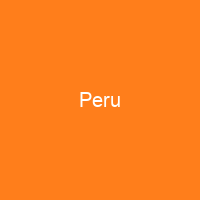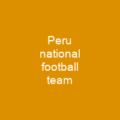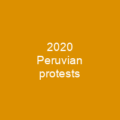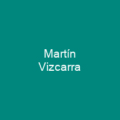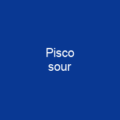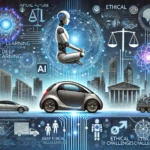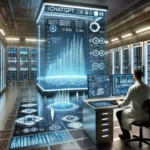Peru: A Land of Riches and Diversity
Imagine a country where ancient civilizations meet modern progress, where bustling cities coexist with serene natural wonders, and where history whispers through every stone and leaf. Welcome to Peru, a nation that has captivated the world with its diverse landscapes, vibrant culture, and rich history.
The Geography of Diversity
Peru is a land of contrasts, from the arid deserts along the coast to the lush rainforests in the Amazon. The Andes mountains slice through the country, creating three distinct regions: the costa (coast), sierra (highlands), and selva (jungle). Almost 60% of Peru is covered by the Amazon rainforest, home to an incredible array of flora and fauna.
Waterways and Reservoirs
The country’s geography includes numerous hydrographic basins. The largest reservoirs in coastal Peru are Poechos, Tinajones, San Lorenzo, and El Fraile, providing vital water resources for the region. These natural wonders support agriculture, industry, and daily life.
A History of Ancient Wonders
Peru’s history is a tapestry woven with threads from ancient civilizations that thrived long before the arrival of the Spanish conquistadors. The Caral-Supe civilization, one of the oldest known complex societies in Peru, flourished along the coast between 3,000 and 1,800 BCE.
The Rise and Fall of Empires
From the Moche to the Inca Empire, each culture left an indelible mark on Peruvian history. The Moche were renowned for their sophisticated pottery and irrigation systems, while the Inca built vast cities like Machu Picchu, showcasing their architectural prowess.
The Spanish Conquest and Independence
With the arrival of Francisco Pizarro in 1532, Peru’s history took a dramatic turn. The Incas were defeated, and Spain began its conquest, leading to centuries of colonial rule. It wasn’t until 1821 that Peru declared independence from Spain, marking the beginning of a new era.
Modern Challenges and Triumphs
The road to modernity was not without challenges. Economic crises, political instability, and social unrest have marked Peru’s journey into the 21st century. However, the country has also seen periods of growth, innovation, and cultural revival, making it a dynamic nation with a bright future.
Modern Peru: A Nation in Transition
Today, Peru is a representative democratic republic with a growing economy and diverse population. The Peruvian armed forces play a crucial role in safeguarding the country’s sovereignty, while the National Police ensures public safety. Despite these advancements, issues like corruption, inequality, and environmental concerns continue to challenge the nation.
Economic Growth and Challenges
The economy of Peru is diverse, with key sectors including mining, agriculture, tourism, and industry. The country has experienced economic growth but faces ongoing challenges in achieving sustainable development and reducing poverty rates.
Culture and Identity
Peru’s culture is a rich blend of indigenous, Spanish, African, Asian, and Arab influences. From the vibrant festivals to the exquisite cuisine, every aspect of Peruvian life reflects this diverse heritage. The country’s toponyms are being standardized using normalized Indigenous language alphabets, preserving cultural identity.
Education and Literacy
Education is a cornerstone of Peru’s future. With a literacy rate of 92.9%, the nation continues to invest in its human capital through mandatory education at all levels. The National University of San Marcos, founded in 1551, remains one of the oldest universities in the Americas.
Peruvian Arts and Culture
Peru’s art scene is a testament to its rich cultural heritage. From pre-Columbian pottery to modernist movements, Peruvian artists have created works that reflect both indigenous traditions and contemporary influences. The charango, a national instrument, embodies the country’s musical legacy.
Cuisine and Festivals
Peruvian cuisine is a culinary masterpiece, blending native ingredients with Spanish, Chinese, African, Arab, Italian, and Japanese flavors. Dishes like ceviche and pachamanca showcase the nation’s diverse tastes and traditions. Festivals such as Inti Raymi celebrate Peruvian heritage through vibrant rituals and performances.
Conclusion
Peru is a land of contrasts, where ancient history meets modern progress, and cultural diversity thrives. From its majestic Andes mountains to the bustling streets of Lima, Peru offers a unique blend of natural beauty, rich culture, and dynamic society. As it continues to evolve, Peru remains a captivating destination for those seeking adventure, discovery, and inspiration.

You want to know more about Peru?
This page is based on the article Peru published in Wikipedia (retrieved on December 29, 2024) and was automatically summarized using artificial intelligence.
